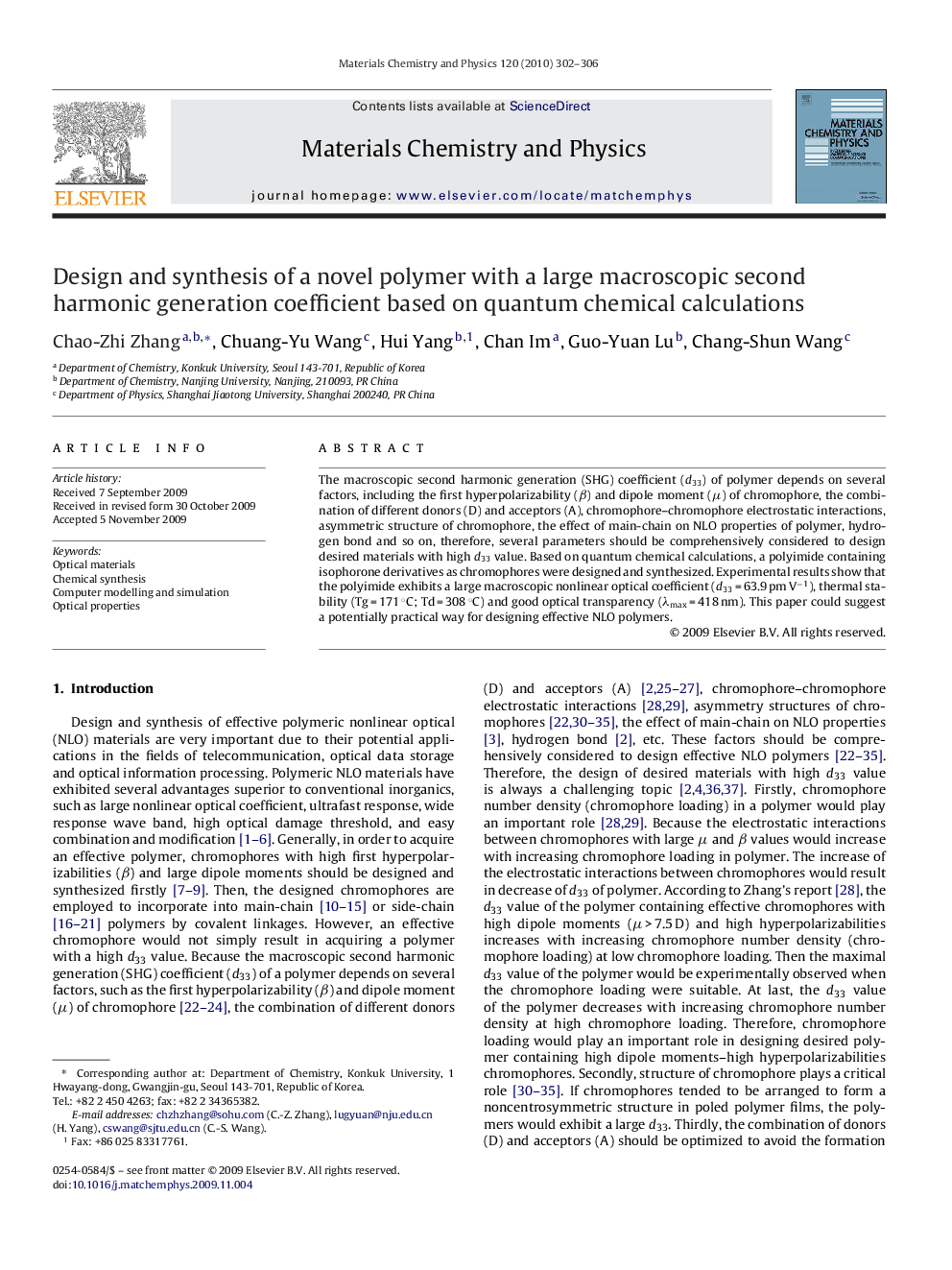| کد مقاله | کد نشریه | سال انتشار | مقاله انگلیسی | نسخه تمام متن |
|---|---|---|---|---|
| 1525390 | 1511841 | 2010 | 5 صفحه PDF | دانلود رایگان |

The macroscopic second harmonic generation (SHG) coefficient (d33) of polymer depends on several factors, including the first hyperpolarizability (β) and dipole moment (μ) of chromophore, the combination of different donors (D) and acceptors (A), chromophore–chromophore electrostatic interactions, asymmetric structure of chromophore, the effect of main-chain on NLO properties of polymer, hydrogen bond and so on, therefore, several parameters should be comprehensively considered to design desired materials with high d33 value. Based on quantum chemical calculations, a polyimide containing isophorone derivatives as chromophores were designed and synthesized. Experimental results show that the polyimide exhibits a large macroscopic nonlinear optical coefficient (d33 = 63.9 pm V−1), thermal stability (Tg = 171 °C; Td = 308 °C) and good optical transparency (λmax = 418 nm). This paper could suggest a potentially practical way for designing effective NLO polymers.
Journal: Materials Chemistry and Physics - Volume 120, Issues 2–3, 15 April 2010, Pages 302–306